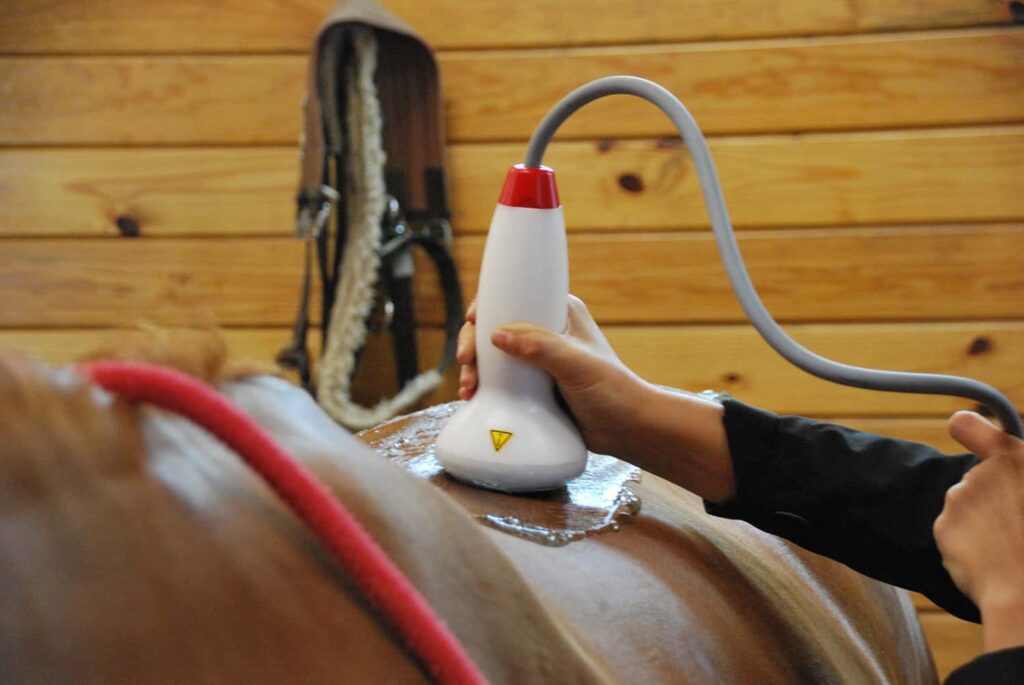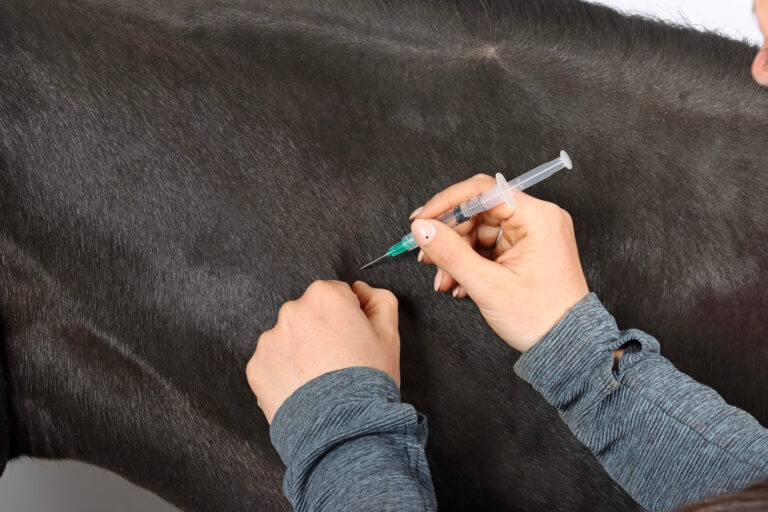
Carrie Schlachter, VMD, DACVSMR, has helped bring countless horses back to soundness and performance through her rehabilitation program at Animals in Motion (AIM), in Penngrove, California. Years ago, she got a call about one of her patients, a warmblood named Tony that had just finished competing in equitation finals on the East Coast. His groom witnessed him slip while trying to stand up after a nap and become lame on one leg. The horse show veterinarian deemed him sound enough to travel back home to the West Coast, and he arrived at Schlachter’s clinic two days later.
“By the time I saw him, he was sore pretty much on the whole left side of his body,” she said. “I imagine he’d been compensating during the trailer ride for the injury as well, but he was basically sore from the base of his low neck all the way back along the saddle area, his lumbar, his sacroiliac, even the hamstrings on the left side of his body.”
Tony was also 3/5 lame at the trot. His lameness improved with a proximal suspensory ligament nerve block, but he remained body sore and asymmetric. Ultrasound revealed a significant tear in the suspensory ligament. So, he spent the next six months at a local rehabilitation program, where he underwent a variety of therapies, including laser, underwater treadmill, orthobiologics, shockwave, controlled exercise, and more.
At that point, Tony was cleared to start trot work under saddle, but after a week the trainer called and said he didn’t feel right.
“It wasn’t that he was necessarily limping like he was before, but he wasn’t trying very hard,” Schlachter explained. “He wasn’t pushing very hard off that leg. Also, the leg wasn’t traversing a full track, so it wasn’t tracking up into the footfall of the leg in front of it—he was short-striding on that leg.”
After reblocking the suspensory to confirm he hadn’t reinjured it, Schlachter performed a physical examination and determined Tony was tight and sore all along his topline and especially painful around the left sacroiliac region. She injected the SI joint and prescribed another two months of rehab that included underwater treadmill, functional electrical stimulation (FES) therapy, long-lining, ground poles, core activation exercises, and weekly massage, chiropractic, acupuncture, and shockwave. He ultimately returned to full soundness and his previous level of performance.
Listen to this episode of Daily Vet Life to learn more about Tony’s recovery, Schlachter’s strategy for rehabbing horses with multiple areas of injury, and why she believes proximal suspensory injuries often go hand in hand with sacroiliac pain.
About Dr. Carrie Schlachter
Carrie Schlachter, VMD, DACVSMR, is a pioneer in integrative sports medicine and rehabilitation therapies. She founded and designed the rehabilitation and fitness programs at Circle Oak Equine Sports Medicine and continues her pursuit of excellence through Animals in Motion (AIM), a hub for cutting-edge veterinary care, education, and sanctuary for animals in need, in Penngrove, California.
Dr. Schlachter is a board-certified Diplomate of the American College of Veterinary Sports Medicine and Rehabilitation and an official FEI delegate for jumpers. She has contributed her expertise to the ACVSMR Examination Committee and the AAEP Scientific Review and Editorial Committee. She teaches globally for Equinology and lectures on topics including sports medicine, rehabilitation, and digital diagnostic imaging. She is also a co-founder of the Academy of Animal Sport Science.
Related Reading
- Disease Du Jour: Equine Rehabilitation Modalities
- Daily Vet Life: Using PET to Diagnose Equine Lameness
- Daily Vet Life: Standing Fractured Splint Bone Removal
Stay in the know! Sign up for EquiManagement’s FREE weekly newsletters to get the latest equine research, disease alerts, and vet practice updates delivered straight to your inbox.


![[Aggregator] Downloaded image for imported item #18395](https://s3.amazonaws.com/wp-s3-equimanagement.com/wp-content/uploads/2025/09/30141538/EDCC-Unbranded-23-scaled-1-768x513.jpeg)
![[Aggregator] Downloaded image for imported item #18808](https://s3.amazonaws.com/wp-s3-equimanagement.com/wp-content/uploads/2025/11/06141153/EDCC-Unbranded-17-scaled-1-768x512.jpg)
